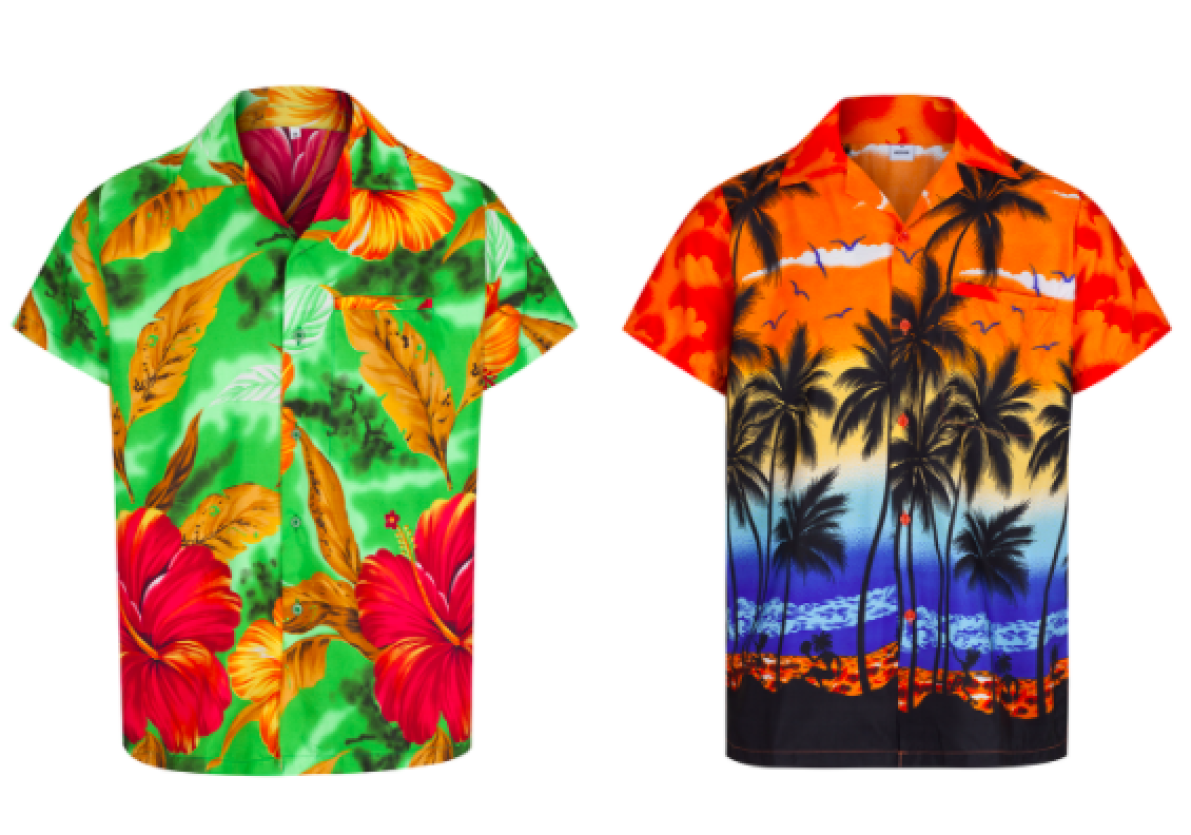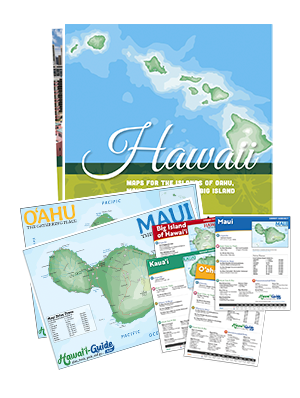Hawaiian Shirts
Most Popular Hawaiian Souvenirs
The iconic Aloha shirt is a true symbol of Hawaii and is recognized in nearly every corner of the globe. Not only that, it just may be one of the world's most enduring souvenirs.
Additionally, the Aloha shirt has also been celebrated— and even glorified— in popular culture. This vibrant item of clothing has become such a symbolic piece of clothing, in fact, that it’s even been honored in a beautifully-illustrated book, "The Aloha Shirt: Spirit of the Islands" by Dale Hope.
So whether you’re a resident of the Hawaiian Islands or simply enjoying your vacation, it’s time to find your inner island spirit and get your hands on a brightly-colored Aloha shirt. Here is everything you need to know about the archipelago’s most celebrated garment.
— article continued below —
2024 Hawaii Visitor Guides
Visiting Hawaii soon? Be sure to grab a copy of one of our updated Hawaii Visitor Guides.
~ Trusted by Millions of Hawaii Visitors Annually ~
What Is a Hawaiian Shirt?
So what exactly is the Hawaiian shirt and why is it such an important emblem of island life? The Aloha shirt (also referred to as the Hawaiian shirt) is a style of dress shirt that can often be worn for casual or smart/casual events. These shirts are printed with floral patterns, usually feature short sleeves, and have a collar.
Traditionally, they have been worn by men but women can also wear them. With so many different print designs available, there’s a Hawaiian shirt for everyone. And with the endless choice of prints and florals, there’s a sense that every single shirt is unique.
History of the Aloha Shirt
The first ever Aloha shirt came from Chinese influences. It was designed in the early 1930s by Chinese merchant Ellery Chun of King-Smith Clothiers & Dry Goods (which was a store in Waikiki). The first ever advertisement of Chun’s Aloha shirt appeared in the Honolulu Advertiser in 1935.
Tourists and local surfers loved Chun’s shirts so much that he was constantly selling out and having to make more. Within a few years, big name brands and retail chains started copying Chun’s Hawaiian shirt and the garment was soon produced en masse.
Following World War II, servicemen and women would return wearing Hawaiian shirts as a symbol of their love for their home islands. And with the Hawaiian tourism boom of the 1950s, the shirt grew in popularity.
Why Are Aloha Shirts Called Hawaiian Shirts?
The meaning of the word Aloha runs deeper than just a greeting. It’s a way of expressing warmth and love, but Aloha is also a way of life. The 'Aloha spirit' or 'the way of Aloha' is the way we connect with ourselves, others, and the natural world. The name 'Aloha shirt' comes from 'Aloha attire', a code of dress that is suitable for events within the local community.
The Aloha dress code is all about relaxed clothing, and over the years the Aloha shirt became known as the Hawaiian shirt due to its popularity with tourists and visitors from around the world.
The Hawaiian shirt rapidly became a symbol of island life, vacations, exotic getaways, and faraway lands to holiday goers. Therefore, the shirt is better known as the Hawaiian shirt these days. And, of course, no trip to Hawaii would be complete without purchasing one (or several) as souvenirs for the trip home.
What Are Aloha Shirts Made Of?
Silk and cotton were the first fabrics to be used for Hawaiian shirts. During the 1930s and 40s, after Chinese merchant Ellery Chun made the first ever shirt, Japanese influences came along. So, silk would have been a material of choice for many during that time. Later on, the first synthetic fiber appeared–rayon–which made mass factory production possible.
Today, it is possible to find various fabrics to suit your personal preference, including cotton, silk, or synthetic. And for those who are after original designs and authentic garments, it’s also possible to shop for vintage Hawaiian shirts, too.
Who Can Wear Aloha Shirts?
As one of the most inclusive pieces of clothing in the world, anyone can wear an Aloha shirt! They come in a seemingly endless combination of colors, prints, and sizes; so everyone is sure to find the perfect Aloha shirt to suit them.
While Aloha shirts have been featured in the media and popular culture (making them retro fashion statements), they are also casual everyday wear for islanders. It is common to see people from every walk of life enjoying the myriad of amazing activities in Hawaii while brightening up their surroundings with a colorful Aloha shirt! They are a great way of bringing islanders and tourists together.
Over the years, many celebrities have been spotted wearing Hawaiian shirts, from the likes of Tom Selleck and Jon Lovitz to Jared Leto, Jack Black, Bruno Mars, and Tom Hardy.
Movies such as "Ace Ventura: Pet Detective", "Raising Arizona", "Runaway Bride", "Weekend at Bernie’s", "True Romance", "From Here to Eternity", "Pineapple Express", and "Blue Hawaii" with Elvis have helped to make the shirt even more widely known around the world.
The Aloha shirt will continue to be a symbol of the islands and will always have a place in popular culture.
About the Author
Sam Butterworth is blog editor at Hawaiian Shirts Online.


















